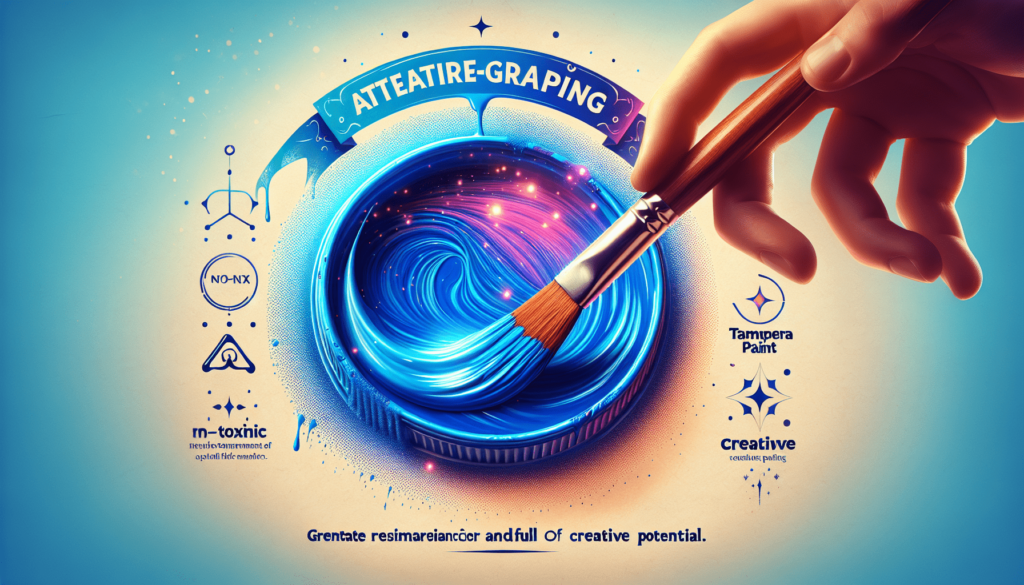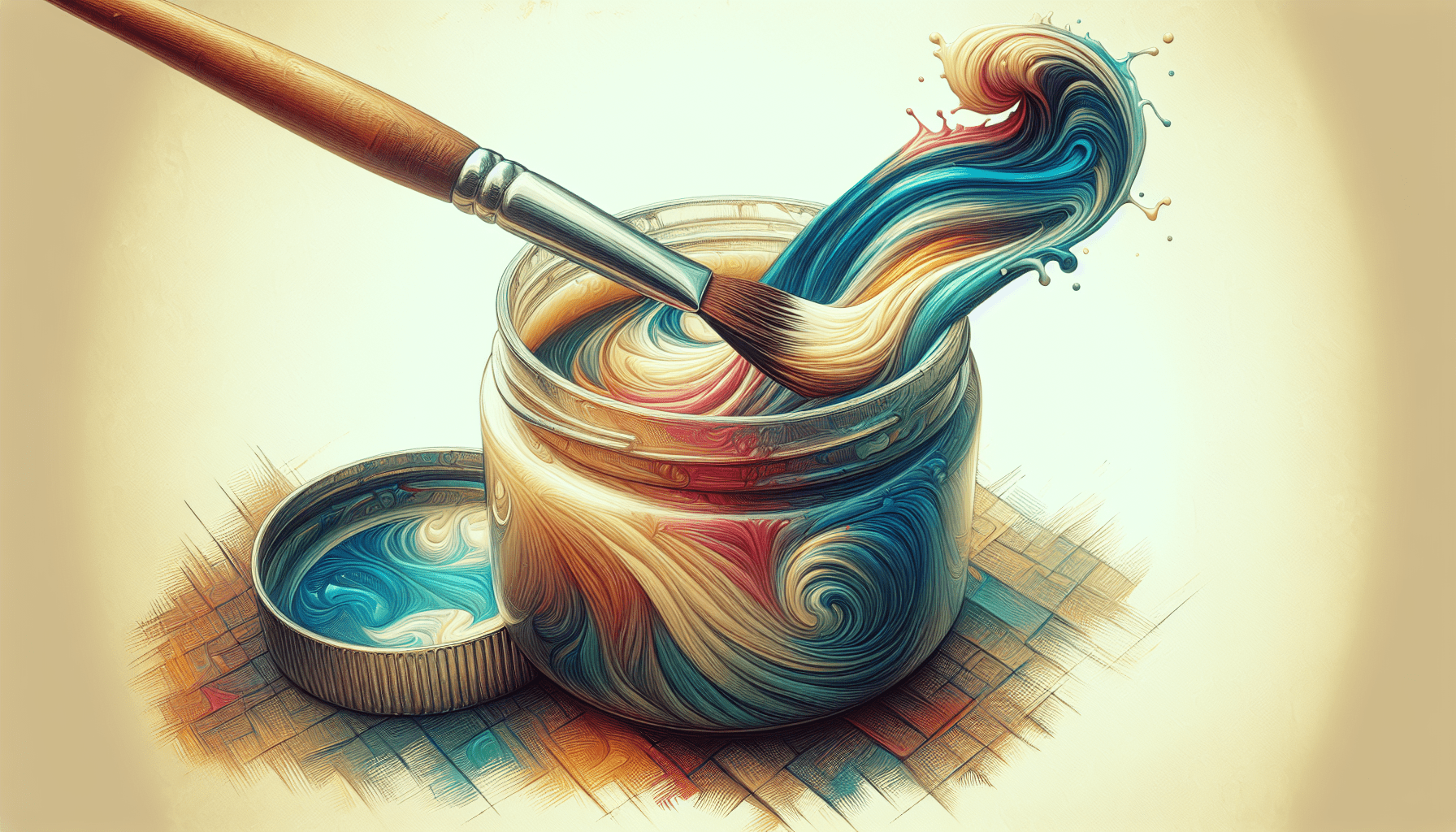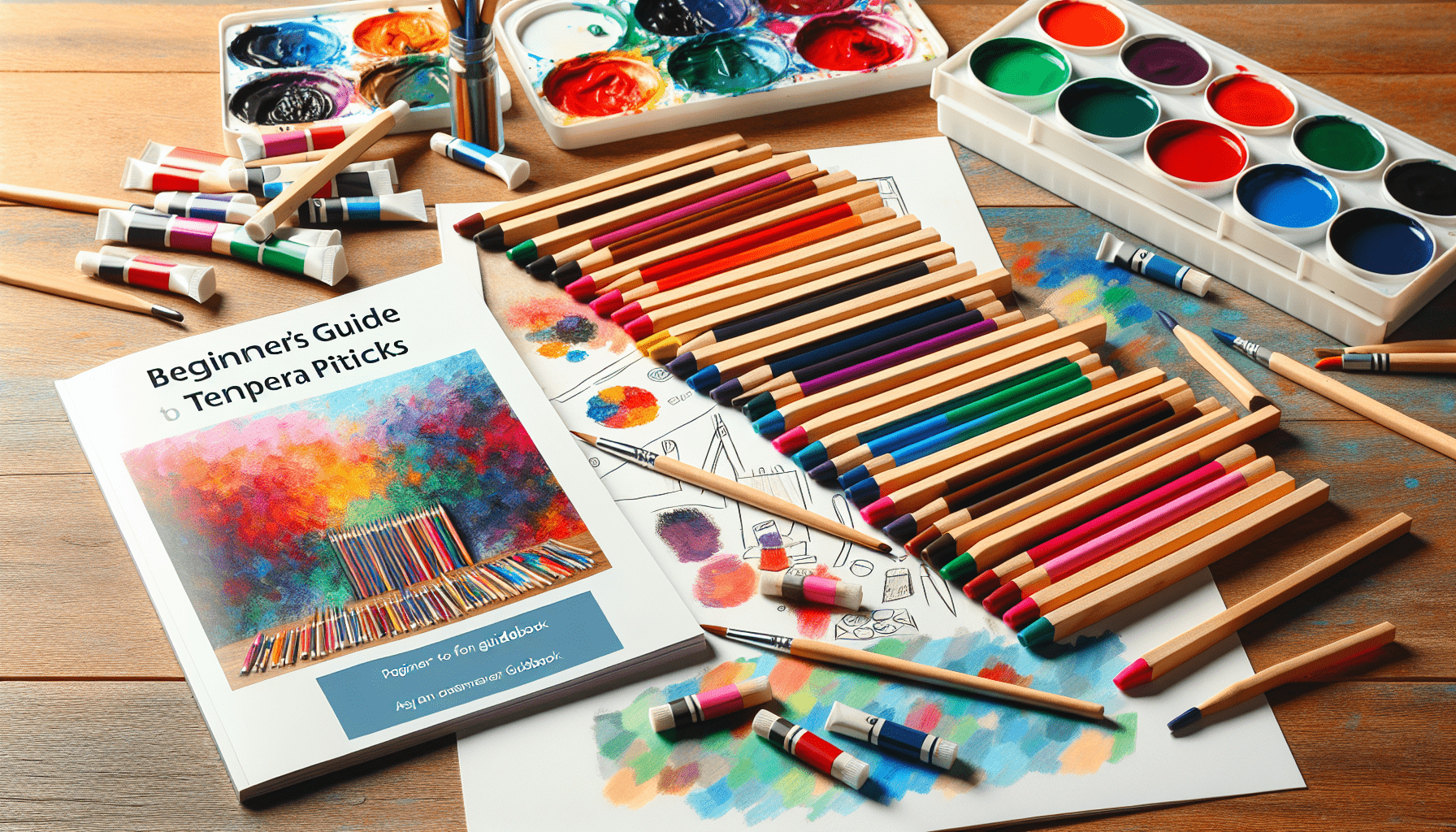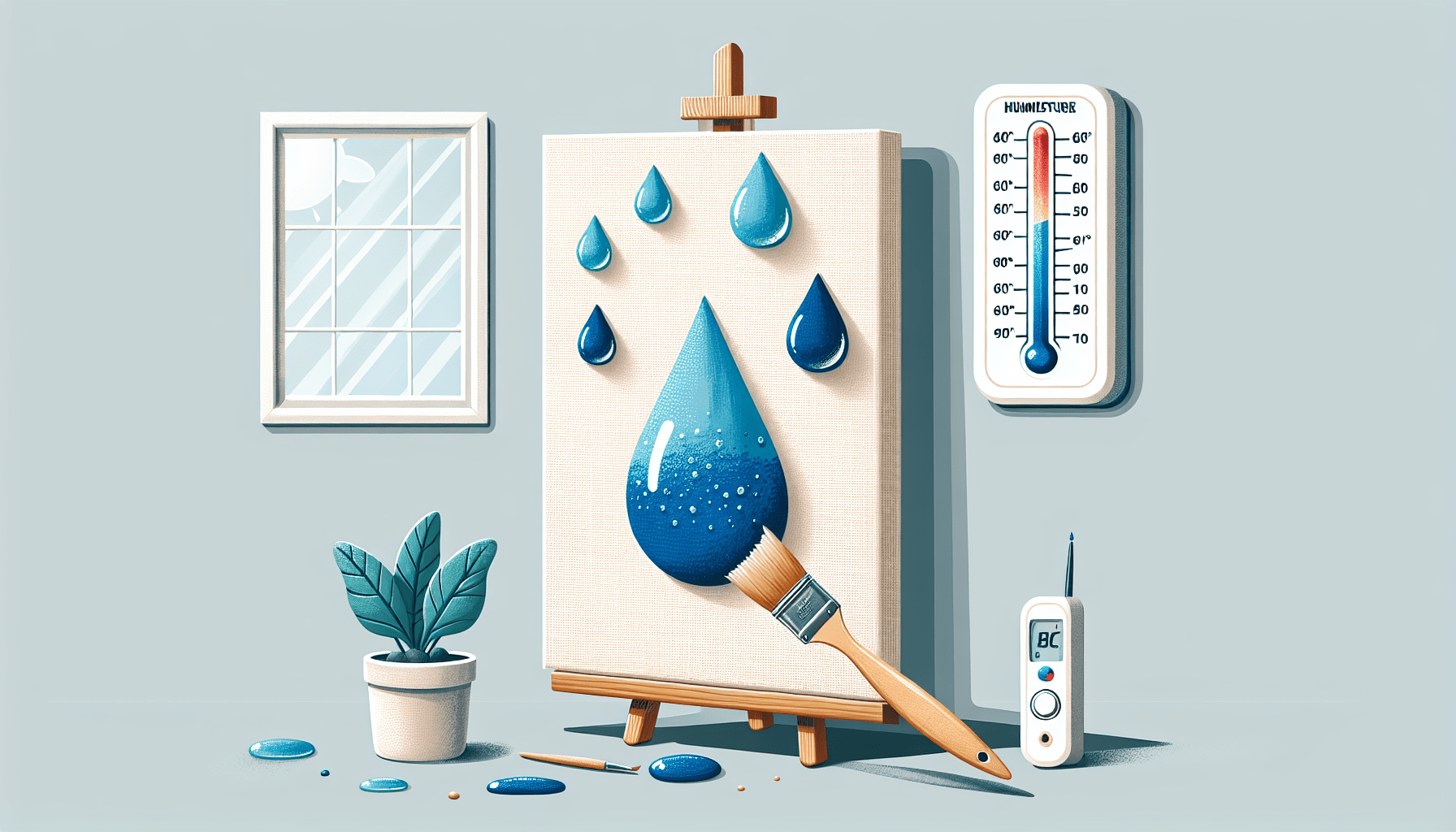In the world of art and creativity, the safety of materials used is of utmost importance. Among the various options available, tempera paint has become a prominent choice for its vibrant colors and smooth application. However, one crucial question arises: is tempera paint non-toxic? Understanding the toxicity levels of artistic materials is essential for both artists and those who may come into contact with these works. This article aims to explore the safety aspects of tempera paint and provide a comprehensive answer to this critical query.

What is Tempera Paint
Definition of Tempera Paint
Tempera paint is a medium that has been used in the art world for centuries. It is a type of paint that is made by combining pigments with a water-soluble binder, such as egg yolks or gum arabic. This results in a smooth and creamy consistency that is easy to work with and dries quickly. Tempera paint is known for its vibrant colors and ability to create detailed and precise artwork. It is often used in various art forms, including paintings, illustrations, and even in classrooms for educational purposes.
Ingredients in Tempera Paint
The ingredients in tempera paint vary depending on the brand and formulation. However, there are some common ingredients that are typically found in most tempera paints. These include pigments, binders, fillers, and preservatives. Pigments are finely ground colorants that give the paint its hue, while binders act as a substance that holds the pigments together and adheres them to the surface. Fillers are added to increase the volume of the paint, and preservatives are included to prevent the growth of bacteria or mold. Some brands may also include other additives to improve the paint’s performance or create specific effects.
Toxicity in Art Supplies
Understanding Toxicity
Toxicity refers to the potential harm or danger that a substance can cause when it is ingested, inhaled, or comes into contact with the skin. Art supplies, including paints, often contain chemicals that can be toxic if used improperly or in excessive amounts. It is crucial to understand the possible risks associated with toxic art supplies to ensure the safety and well-being of artists, especially those who work with these materials regularly.
Health Risks of Toxic Art Supplies
Exposure to toxic art supplies can pose various health risks. Many paints contain toxic substances, such as heavy metals like lead, cadmium, and chromium, as well as volatile organic compounds (VOCs) like formaldehyde. These chemicals can be harmful when they are absorbed into the body through inhalation, skin contact, or accidental ingestion. Prolonged exposure to toxic art supplies may cause a range of health issues, including respiratory problems, skin irritation, allergies, organ damage, and even long-term health effects. It is crucial to take precautions and use safer alternatives when working with art supplies.
Debunking Common Myths
Myth: All Paints Are Toxic
One common myth is that all paints are toxic. While it is true that many paints contain toxic substances, not all paints are necessarily toxic. Non-toxic paints, such as tempera paint, are formulated to be safer and free from or contain minimal amounts of harmful chemicals. These paints are designed to be used by artists of all ages, including children, without posing significant health risks. It is important to read labels and choose paints that are labeled as non-toxic or safe for use.
Myth: Artists are Exposed to Toxic Chemicals
Another myth is that artists are constantly exposed to toxic chemicals and are at higher risk of developing health issues. While it is true that artists who work with certain materials need to take precautions, such as proper ventilation and protective equipment, not all art supplies pose an equal level of risk. By choosing non-toxic paints and using safe handling practices, artists can minimize their exposure to toxic chemicals and create art without compromising their health.
Myth: All Non-Toxic Paints are Safe for Children
It is a widespread misconception that all non-toxic paints are safe for children. While non-toxic paints are generally formulated with children in mind, there can still be individual variations in sensitivity or allergies. It is important for parents and caregivers to consider their child’s specific needs and any known allergies before allowing them to use art supplies. Additionally, adult supervision and guidance are always recommended when children are working with any art materials.
Determining Non-Toxicity
Regulatory Standards and Labels
Regulatory standards and labels play a crucial role in determining the non-toxicity of art supplies, including paints. In many countries, there are specific regulations and guidelines in place to ensure the safety of art materials. These regulations often require manufacturers to conduct tests and provide information about the potential health hazards associated with their products. Labels on art supplies, such as “non-toxic,” “AP certified,” or “conforms to ASTM D-4236,” indicate that the product has met certain safety standards. Checking for these labels can help artists and consumers make informed choices about the safety of art supplies.
Researching and Evaluating Safety
Apart from relying on labels, it is also important to conduct independent research and evaluate the safety of art supplies. This can involve researching the ingredients used in the paints, consulting trusted sources, and considering the reputation and credibility of the manufacturer. Artists and consumers can also refer to safety resources provided by art organizations, government agencies, or health institutions for additional guidance and information regarding the safety of specific art materials.
Understanding Labels
Understanding the labels on art supplies is essential for determining non-toxicity. Labels often provide information about the composition of the paint, including the specific chemicals or compounds used. They may also include instructions for safe use, precautions, or warnings pertaining to any potential hazards associated with the product. Take the time to carefully read and understand these labels to ensure the safe use of art supplies and minimize any potential risks.

Understanding Tempera Paint
Non-Toxicity of Tempera Paint
Tempera paint is generally considered to be non-toxic when used as intended. The main reason for this is that most tempera paints are formulated without the use of toxic substances, such as heavy metals. Instead, they often contain safer ingredients like natural or synthetic pigments, organic binders, and water. This makes tempera paint a popular choice for schools, art classes, and parents who want a safe and non-toxic painting medium for children. However, it is always essential to check individual product labels to confirm non-toxicity.
Common Ingredients and Safety
The common ingredients found in tempera paint, such as pigments, binders, fillers, and preservatives, are generally considered safe for use in art materials. Natural or synthetic pigments provide the color in the paint, while organic binders help the paint adhere to surfaces. The fillers and preservatives used in tempera paint are typically chosen to meet safety standards and prevent any degradation of the paint. It is important to note that while tempera paint is generally safe, individuals with specific allergies or sensitivities should exercise caution and consult a healthcare professional if needed.
Potential Allergies or Sensitivities
Although tempera paint is generally considered non-toxic, some individuals may still experience allergies or sensitivities to certain ingredients. Allergies can vary from person to person, and it is crucial to be aware of any potential allergens in art supplies. Some common allergens in tempera paint may include egg proteins or other binders derived from natural sources. Additionally, synthetic pigments or other additives could potentially cause sensitivities in some individuals. If any adverse reactions occur while using tempera paint, it is recommended to discontinue use and seek medical advice if needed.
Possible Risks and Precautions
Accidental Ingestion or Inhalation
One potential risk when working with any art supplies is accidental ingestion or inhalation of the paint particles or fumes. This is especially important to be cautious of when using art supplies around young children. To prevent accidental ingestion, it is crucial to keep art supplies out of reach and supervise children closely while they are engaged in artistic activities. When working with art supplies, proper ventilation is also essential to minimize the inhalation of any potentially harmful fumes or particles.
Skin Irritation and Allergies
Another possible risk is skin irritation or allergies caused by direct contact with tempera paint. Some individuals may develop allergic reactions, particularly if they have known sensitivities or allergies to specific ingredients in the paint. To minimize the risk of skin irritation, it is advisable to wear protective gloves or wash hands thoroughly after using tempera paint. If any skin irritation occurs, it is important to discontinue use and seek medical advice if necessary.
Safe Handling Practices
To ensure the safe use of tempera paint, it is important to follow safe handling practices. This includes storing the paint in a cool and dry place, away from direct sunlight or extreme temperatures. Proper ventilation is crucial when using tempera paint, especially in enclosed spaces. If using spray or aerosol forms of tempera paint, it is important to use respiratory protection, such as masks or respirators, to prevent inhalation of any potentially harmful particles. Additionally, always read and follow the instructions provided by the manufacturer for safe and appropriate usage of the paint.
Alternatives to Tempera Paint
Watercolor Paint
Watercolor paint is another popular alternative to tempera paint. It is typically made by combining pigments with a binder, such as gum arabic. Watercolor paints can be diluted with water to create various effects and are known for their transparency and ability to create delicate washes of color. Like tempera paint, watercolor paints are generally considered to be non-toxic. However, it is important to check product labels and choose brands that meet safety standards.
Acrylic Paint
Acrylic paint is a versatile and popular choice among artists. It is made by combining pigments with an acrylic polymer emulsion, resulting in a fast-drying and water-resistant paint. Acrylic paints are known for their vibrant colors and ability to create bold and textured artwork. While some acrylic paints may contain toxic substances, there are many non-toxic options available in the market. Look for brands that are labeled as non-toxic or safe for use.
Natural and Organic Paints
For those who prefer to use art supplies that are eco-friendly and free from synthetic chemicals, natural and organic paints can be a great alternative. These paints are typically made from natural or plant-based ingredients, such as plant extracts, minerals, or natural pigments. While natural and organic paints can vary in terms of their performance and availability, they offer artists a safer and more sustainable option for creating art.
Safety Tips for Artists and Parents
Ventilation and Respiratory Protection
One of the most important safety tips for artists and parents is to ensure proper ventilation when using art supplies, especially those that may emit fumes or particles. Working in a well-ventilated area helps to reduce the inhalation of any potentially harmful substances. When working with spray or aerosol forms of paint, it is also essential to use adequate respiratory protection, such as masks or respirators, to prevent inhalation of any harmful particles.
Proper Use and Storage
Proper use and storage of art supplies are crucial for maintaining their safety and longevity. Follow the manufacturer’s instructions for safe and appropriate usage of the paint. This may include using the paint in well-ventilated areas, avoiding direct contact with skin or eyes, and disposing of any leftover paint or containers properly. When not in use, store art supplies in a cool and dry place, away from children and pets, to prevent accidental ingestion or spillage.
Choosing Suitable Supplies for Children
When it comes to children using art supplies, it is essential to choose materials that are safe and age-appropriate. Select art supplies, including paints, that are labeled as non-toxic or safe for use by children. Consider their specific needs, such as any known allergies or sensitivities, and closely supervise their activities. Educate children on proper handling and use of art supplies to ensure their safety while fostering their creativity.
Conclusion
Safety of Tempera Paint
In conclusion, tempera paint is generally considered to be non-toxic and safe for use. Its formulation using natural or synthetic pigments, organic binders, and water makes it a popular choice for artists of all ages, including children. However, it is important to be aware of any potential allergies or sensitivities and to exercise safe handling practices when using tempera paint, as with any art supplies.
Importance of Responsible Art Supply Use
Responsible art supply use is essential for the safety and well-being of artists, students, and anyone using art materials. By understanding the potential risks associated with toxic art supplies and making informed choices, artists can protect themselves and their loved ones from any harm. Following proper safety precautions, properly storing art supplies, and using suitable materials for each individual’s needs are all crucial aspects of responsible art supply use.
Further Research and Personal Judgment
While this article provides a comprehensive overview of tempera paint, toxicity in art supplies, and safety considerations, it is important to conduct further research and exercise personal judgment when selecting and using art materials. Every individual may have unique sensitivities or allergies, and it is vital to take these factors into account when making choices about art supplies. Stay informed, consult trusted sources, and prioritize safety to ensure enjoyable and safe artistic endeavors.



